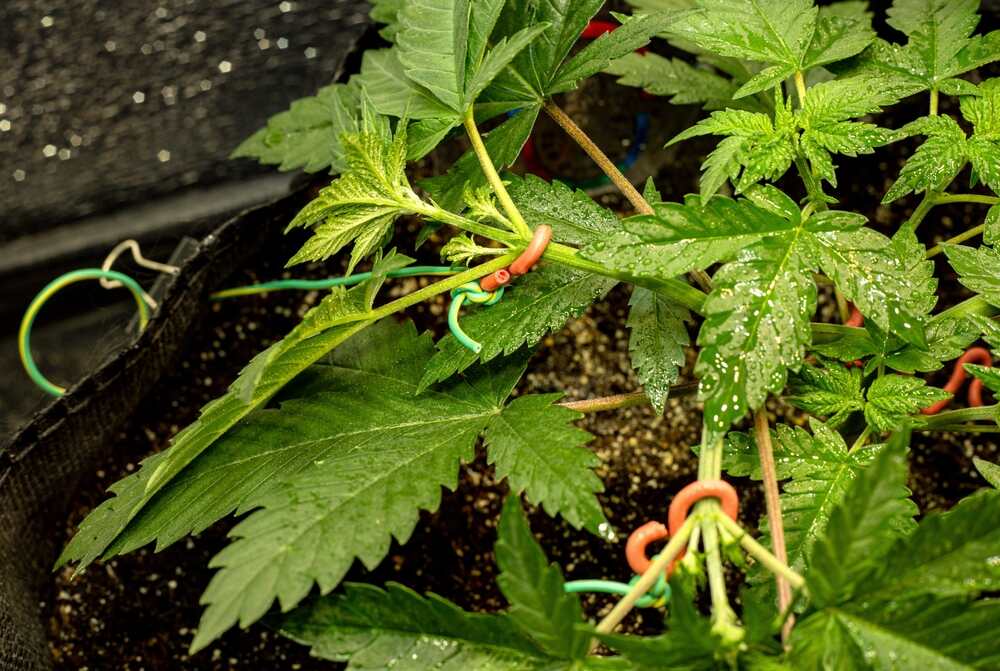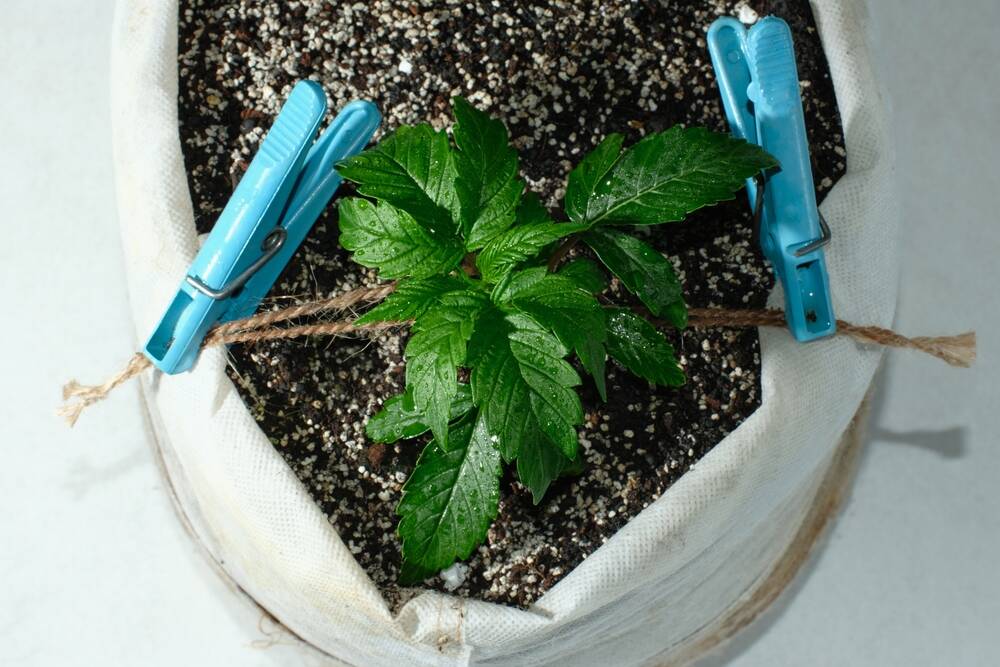The Best Fluffy Pancakes recipe you will fall in love with. Full of tips and tricks to help you make the best pancakes.

How to LST Cannabis
When it comes to maximizing your cannabis yields, Low-Stress Training (LST) is a super effective method. By gently manipulating the growth of your plants, you can improve light exposure, increase yields, and make the most of your growing space. Whether you’re just starting out or have been growing weed for a while, LST offers an easy, low-maintenance technique to boost performance. Let’s dig into how you can master this essential growing technique.
What is Low-Stress Training (LST)?
Low-Stress Training (LST) is a technique used by growers to shape cannabis plants by bending branches without causing stress. By doing this, you allow more light to reach the lower parts of the plant, promoting better overall growth and yield. Unlike other methods like topping, LST keeps your plant intact, letting it grow without needing to heal from cuts or pruning.
Definition and Purpose of LST
LST involves bending and tying down branches to control the plant’s shape. The purpose is to guide your cannabis plant to grow horizontally, allowing light to hit more bud sites. This helps to increase yields by spreading out the growth, so you don’t end up with just one big cola at the top and small, weak branches below.
Differences Between LST and High-Stress Training
The key difference between LST and high-stress training techniques like topping or super cropping is that LST doesn’t stress the plant. High-stress methods involve cutting or pinching, which can slow down growth while the plant recovers. LST is all about bending the branches and guiding them in a way that encourages growth without causing harm.

Benefits of LST for Cannabis Plants
There are plenty of reasons why growers use LST:
- Increases light exposure to more parts of the plant
- Boosts yields by creating more viable bud sites
- Ideal for maximizing space in small or indoor grows
- Keeps the plant healthy and growing without slowing it down
Why Should You Use LST?
If you want to grow weed more efficiently, LST is the way to go. It’s especially helpful if you’ve got limited space or need to keep your plants discreet. The technique allows you to control the height and shape of your cannabis plants, ensuring they stay manageable while also boosting your overall yield.
Maximizing Light Exposure
LST works by bending the branches down, so more parts of the plant are exposed to light. This method ensures that even the lower branches receive enough light to produce solid buds, leading to an increase in overall yield.
Controlling Plant Height
One of the biggest advantages of LST is how it keeps your plants short and bushy. By controlling the height of your cannabis plant, you make it easier to grow in spaces with low ceilings or limited vertical room. It’s also great if you’re trying to keep your grow on the down low.
Boosting Yields and Bud Quality
Because LST exposes more bud sites to light, it results in a significant increase in yield. You’ll also get more even bud development, so you won’t be left with one massive cola at the top and a bunch of smaller, lower-quality nugs.

When to Start LST on Cannabis Plants?
Timing matters with LST, but luckily, it’s a technique you can begin pretty early in your growing process. The best time to start is when the plant is young, and the branches are still flexible. You can start as soon as your plant has a few sets of leaves and continue throughout the vegetative stage.
Ideal Plant Growth Stage for LST
The ideal time to start LST is during the vegetative stage when your plant is still growing and can handle some manipulation. Start early, when the plant has 4-6 nodes, for the best results. This is the time when the plant is putting out a lot of energy into growing, making it the easiest time to shape it.
LST Timing for Autoflowers vs Photoperiod Strains
For autoflower strains, timing is a little trickier since they have a shorter veg period. You’ll want to start as early as possible to get the most out of your training. Photoperiod strains give you more flexibility since you can control when they switch to flowering, allowing you to spend more time bending and shaping the plant.
How to Perform LST Step-by-Step
Here’s how to get started with LST on your cannabis plants.
Step 1: Gather Your Tools
You’ll need a few key items to perform LST:
- Soft plant ties or garden wire
- Stakes or bamboo canes to tie branches down
- Scissors for trimming if necessary
Step 2: Select Which Branches to Bend
Start by choosing the tallest branches. These are the ones you want to bend down to create an even canopy. Gently bend the branches, being careful not to snap them.
Step 3: Tying Down the Branches
Once you’ve bent the branches, use your plant ties to secure them to the pot or stakes. The goal is to make sure the top of the plant is at the same height as the lower branches, maximizing light exposure.
Step 4: Monitoring and Adjusting the Canopy
Over the next few days, the branches will start to point back up towards the light. Keep an eye on the plant and adjust the ties as needed to maintain an even canopy.
Step 5: How Long to Continue LST
LST can be done throughout the vegetative stage and even into early flowering. However, once the plant starts flowering in earnest, the branches become more rigid, and it’s best to stop to avoid breaking them.
Tips for Successful Low-Stress Training
While LST is easy to do, here are a few tips to make sure you get the best results.
How to Avoid Breaking Branches
Always bend the branches slowly and gently. If a branch feels like it’s going to snap, stop and try bending it a little more over the course of a few days. You can always tape up a snapped branch, and in most cases, the plant will heal.
Best Tools and Materials for LST
Use soft ties, twisty ties, or coated garden wire. Avoid using anything sharp like string or fishing wire, as these can cut into the plant as it grows.
Common Mistakes to Avoid During LST
- Don’t bend branches too far in one go.
- Make sure ties are loose enough to allow the plant to grow.
- Avoid doing LST too late into the flowering stage when branches are more rigid.
LST and the Flowering Stage
As your plant begins to flower, the strategy for LST changes slightly. You can continue LST during the first couple of weeks of flowering (also known as the “flowering stretch”), but after that, you’ll want to stop bending to avoid breaking the branches.
When to Stop LST Before Flowering
Stop LST around 2-3 weeks into the flowering stage. At this point, the plant is more focused on developing buds, and its stems will be less flexible.
Adjusting LST During the Flowering Stretch
During the flowering stretch, the plant grows rapidly. Keep adjusting your ties during this phase to ensure the canopy remains even. Once the stretch is over, stop manipulating the plant to let it focus on bud production.
Effects of LST on Bud Development
LST helps to create more bud sites by allowing more light to reach different parts of the plant. This means bigger, more evenly sized buds and, of course, higher yields.
FAQ
How does LST differ from other cannabis training techniques?
LST involves bending branches without cutting. High-stress techniques like topping involve removing plant parts, which slows down growth.
Can you use LST on autoflowers?
Yes, but start early since autoflowers have a shorter vegetative period.
How long does LST take to show results?
You’ll start seeing upward growth within days. Over time, you’ll notice an increase in bud sites and a more even canopy.
What happens if I stop LST too early?
The plant will revert to its natural upward growth, reducing light exposure to the lower branches and affecting yields.
Can LST stress my plant and lower yields?
No, LST is designed to be a gentle technique that improves yield without stressing the plant.
Low-Stress Training is a simple, effective method to help you get more out of your cannabis plants. With a little bit of time and effort, you can boost your yields, create a more manageable plant shape, and make the most of your light and space. Whether you’re growing weed indoors or outdoors, LST is a great technique to add to your toolkit!





LST training is the bomb and will increase yield because light encompasses more of the plant that just topping.